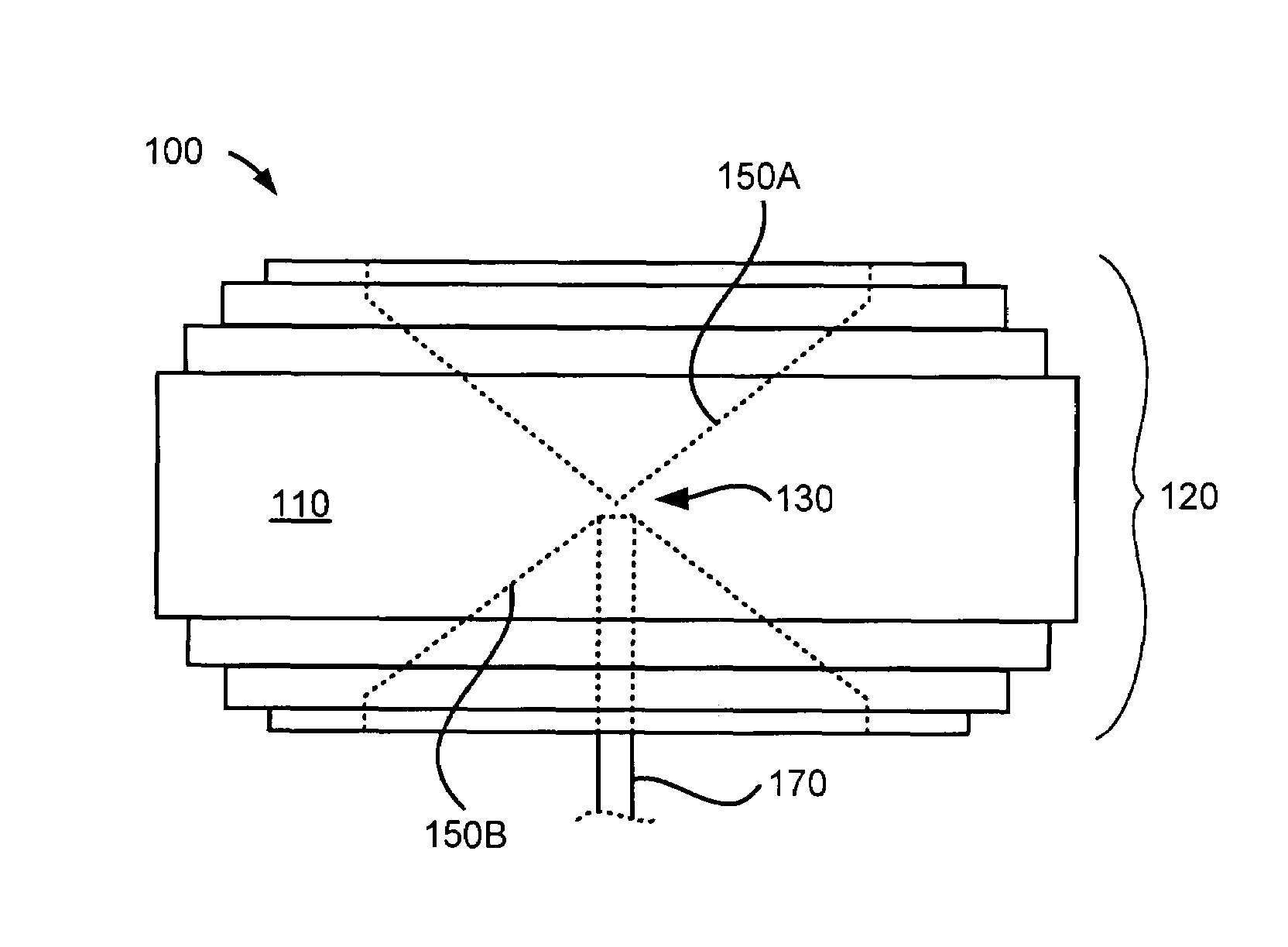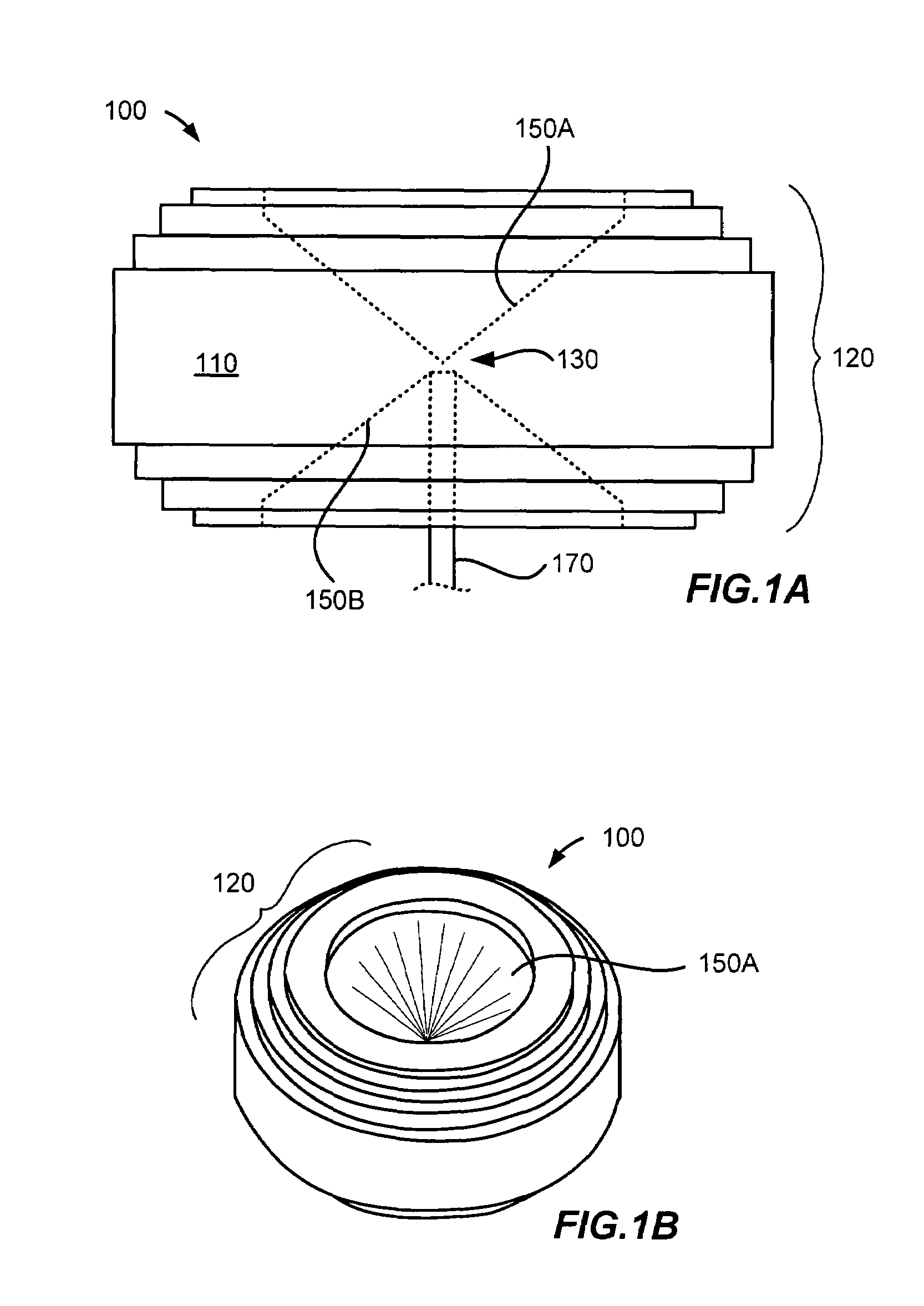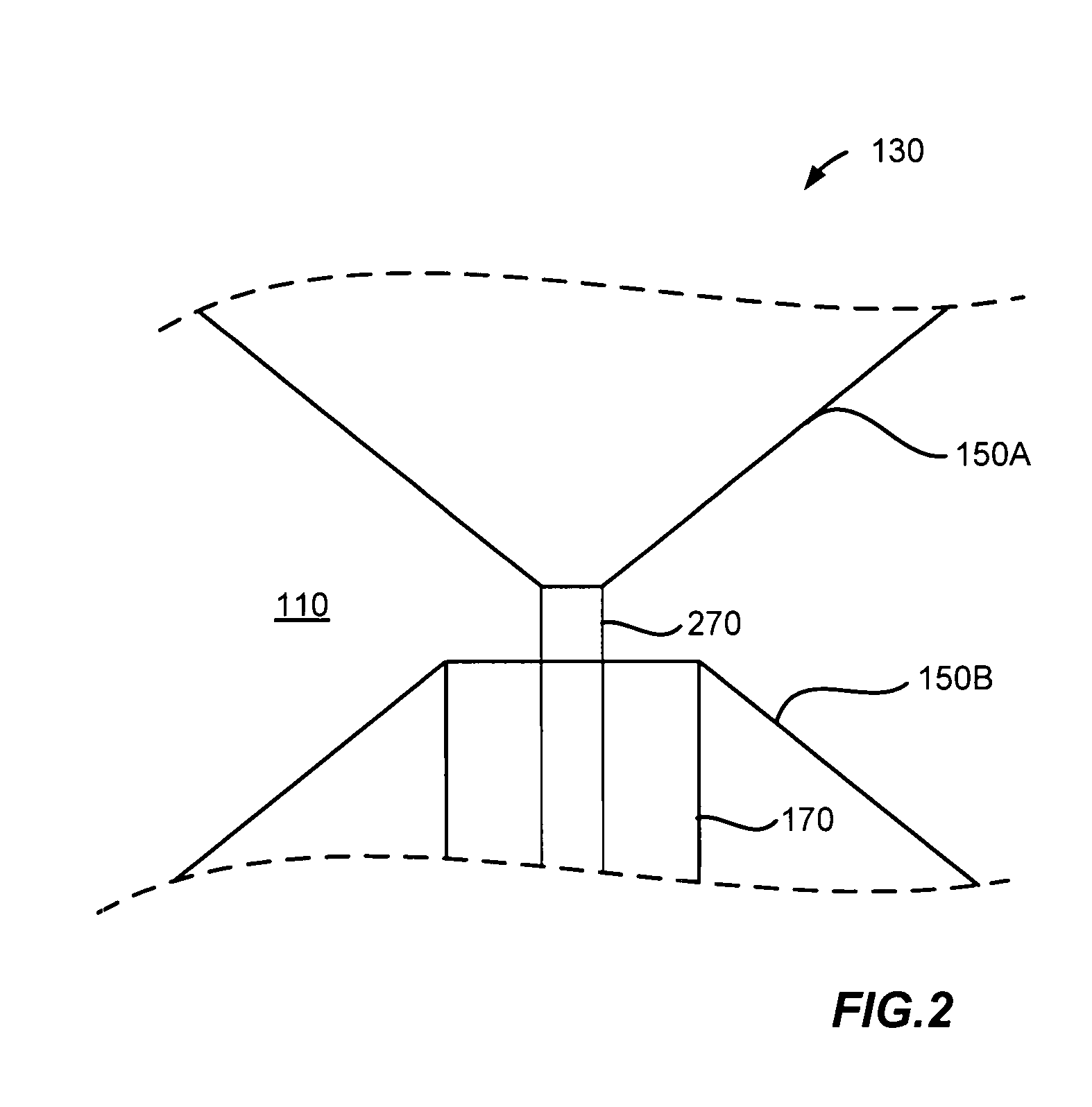Bicone pattern shaping device
a pattern shaping and bicone technology, applied in the direction of antennas, antenna feed intermediates, electrical devices, etc., can solve the problems of reducing the availability of external lens elements for all bicone systems, and reducing the mechanical robustness of the antenna assembly. , to achieve the effect of reducing material costs, material handling costs, and manufacturing costs
- Summary
- Abstract
- Description
- Claims
- Application Information
AI Technical Summary
Benefits of technology
Problems solved by technology
Method used
Image
Examples
Embodiment Construction
[0017]The present invention supports a broadband omni-directional bicone antenna comprising conical voids provided within a dielectric structure. The surfaces of the conical voids can be metallized to form conductive cone antenna elements. The outside surface of the dielectric structure can be shaped as radio frequency (RF) lens structures operable for beam forming. The beam forming can modify the elevation pattern of the radiation from the bicone antenna. The dielectric structure may be machined or molded from a single piece of material to provide both the conical voids as well as the beam shaping lenses.
[0018]The outer surface beam shaping lenses can be zoned or continuous and can provide elevation patterns with increased gain, cosecant squared falloff, or various other patterns. The beam forming lens may be formed from any low-loss dielectric. Alternatively, the lens may be formed from a less dense material such as dielectric foam that can support radial conductive beam forming v...
PUM
 Login to View More
Login to View More Abstract
Description
Claims
Application Information
 Login to View More
Login to View More - R&D
- Intellectual Property
- Life Sciences
- Materials
- Tech Scout
- Unparalleled Data Quality
- Higher Quality Content
- 60% Fewer Hallucinations
Browse by: Latest US Patents, China's latest patents, Technical Efficacy Thesaurus, Application Domain, Technology Topic, Popular Technical Reports.
© 2025 PatSnap. All rights reserved.Legal|Privacy policy|Modern Slavery Act Transparency Statement|Sitemap|About US| Contact US: help@patsnap.com



